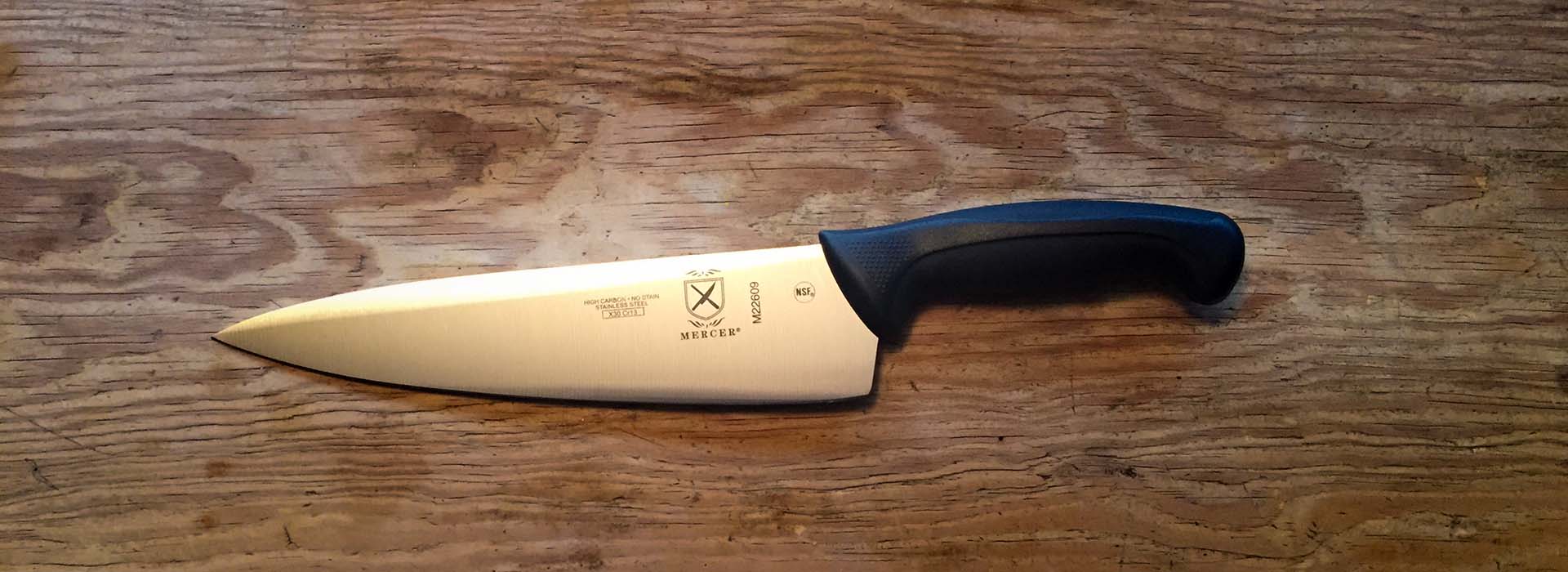
Build Out Your Knife Bag
The knife bag is central to a cook’s working life. As cooks file into their kitchens, the ubiquitous knife roll is the first thing onto the counter. The contents vary from cook to cook, but there are always a few items that can be found in just about every roll.
If you’re new to cooking and want to have a head start in your new kitchen here are a few thoughts on what makes the ideal knife roll from our friend Eytan Zias, proprietor of both the Phoenix Knife House and the Portland Knife House.
What knives should every professional cook have in their knife roll?
We consider the core 5 knives to be:
Chef Knife 8-10″ – This is the primary knife which will be used for the vast majority of your work and your main priority.
Paring knife 3-4″ – Used for tasks off the cutting board such as coring and peeling.
Slicer 10+” – Used mainly for portioning of meat, fish and carving. The idea here is to reduce the amount of strokes needed by using a longer blade.
Boning Knife 6″ – Used for working with bone-in proteins such as breaking down whole chickens and lamb racks (not necessary for cleaning fat and silver skin).
Serrated Bread Knife – A must if working with bread since a crusty loaf will dull any plain edged blade no matter what the quality.
If a cook is on a budget, what are some brands they should look for?
Short answer: Tojiro and Victorinox.
Long answer: Using the 8″ chef knife as an example, and ones widely available – Victorinox is the “old standby” at around $35-40. A better buy these days are the Tojiro DP and Misono Handmade series, both in the $80 range. Tojiro is known for providing excellent steel in a basic package, and if carbon is an option they also make a great white-steel chef knife at $60.
The $6 Victorinox Fibrox paring knife is one of the “must have” knives in the kitchen and they make great bread and boning knives in the $25 range.
What are some tips for choosing a knife?
Blade steel and geometry are the most important aspects of a blade – the harder the steel and thinner the blade the better it will perform for most tasks. Avoid buying heavy, full bolstered blades – that is not a sign of quality and will work against you.
What knives should be avoided?
Cooks should recognize the type of work they do and the amount of time they are willing to invest in maintaining a blade. A good example are the traditional Japanese single bevel knives which are incredible tools in the right hands – but they are very task-specific and should only be used by people who do their own water stone sharpening and perform that type of task.
We see many chipped and rusty knives in the hands of people who would be much happier with a well-made stain-resistant western style knife. And the same works the other way, anyone doing precision work would not be happy using a heavy German style blade.
What are some tips for maintaining a knife?
Maintenance is everything! Every knife needs regular honing and sharpening and the only way to improve is by practice. A medium grit waterstone (#800-1200) is a must for any knife (polishing is optional) and if you use a honing rod then a fine ceramic will be the most effective (just don’t drop it).
And avoid draw-through sharpeners at all costs.
Thanks Eytan.
If you have questions about knives, reach out to us at blog@poachedjobs.com – we’d love to hear from you!


